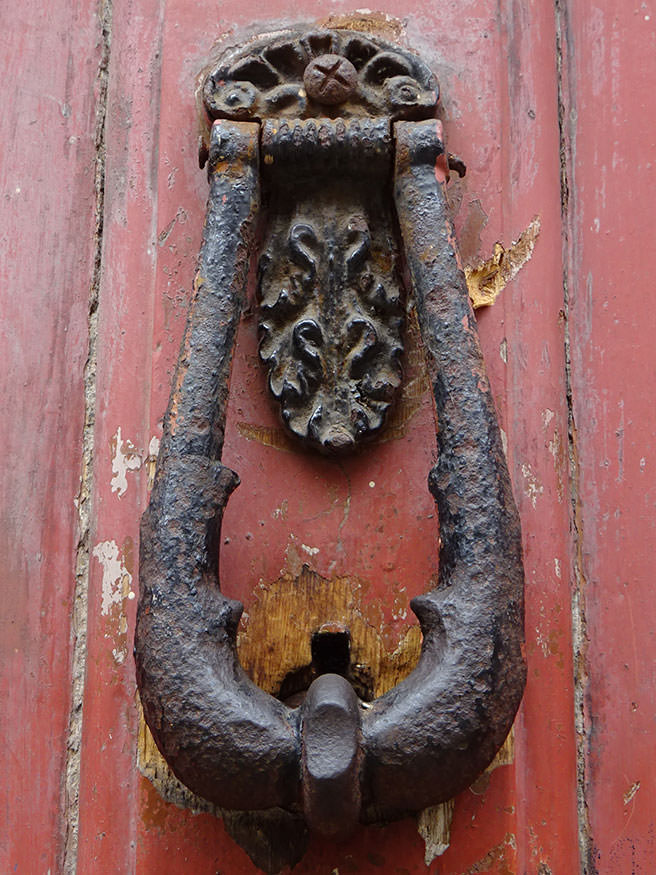
We talked about our day wandering around Spitalfields recently – in particular, all the fabulous original architectural features that we saw – many dating from the 18th & 19th century.


One such feature was the door knockers. We became aware of them immediately. They came in all shapes, sizes and styles – with some common themes such as garlands, rope twists, ladies’ hands, sphinx heads, fish and lions.

Door knockers are thought to have originated in ancient Greece, when… wait for it… a slave was chained to the door. Their sole purpose was to open the door for recognised visitors. If they’d fallen asleep, the metal ring that they were chained to acted as a knocker to wake them up. We’re pleased to announce that no one was chained to the doors of Spitalfield! Ancient Rome adopted the custom and door knockers became a feature of wealthy houses throughout the empire. Over time, they developed from a simple ring into the more elaborate designs.


Think of all the people who’ve knocked on them over the years – from tradespeople delivering & hawking their wares to dinner guests in their finery. Imagine all the characters and costumes! That’s the wonder of historical objects. And there are fascinating little historical side stories to be uncovered. For example, the design below is early Georgian and known as the ‘Doctor’s door knocker’ as it actually indicated where a doctor lived. It has now become one of the more commonly reproduced classic examples seen throughout the UK.

Adelle was given an antique lion’s head door knocker many years ago by her dad to put on the front door of her first ever flat – and it’s been mounted on every front door of every house lived in since. The lion represents bravery, valour, nobility and strength. It’s seen as a protective force for those living within the house. Alas, it doesn’t seem to put off cold callers or the delivery of bills.


We saw lots of these lovely hand knockers that day. They’re based on the hand of Fatima – a palm-shaped amulet that protected against evil. It was seen as the perfect form for a door knocker, protecting the house inhabitants in the same way. They were common in countries around the Mediterranean, from where their popularity spread. Fatima is also known as Hamsa – the daughter of the prophet Muhammad – and her symbolic hand is a popular talisman across the Middle East and Northern Africa.

An attractive door knocker has such presence – and makes a very good first impression on visitors.And when you wander round historical streets like those in Spitalfields, with different knockers on every door, it adds such interest to the rows of houses. These pictures represent only a small selection of those we saw that day. If we ever return to the area (which we’re sure that we will), we’re going to create a more comprehensive image catalogue.